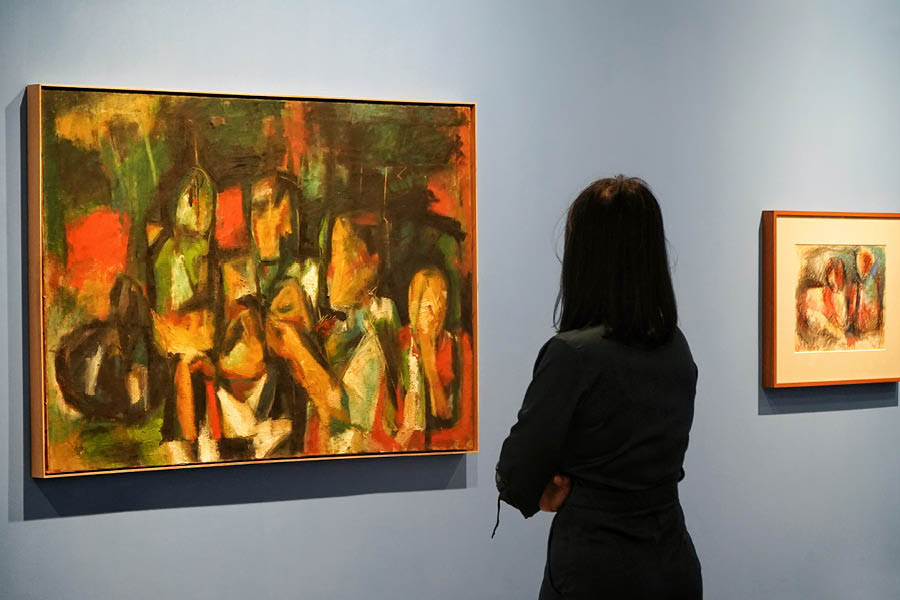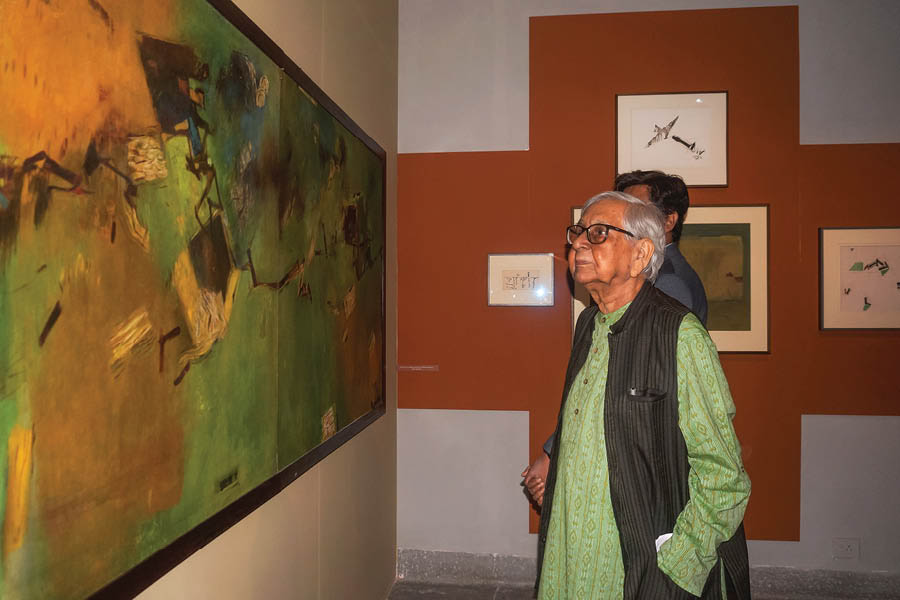“Do you know how to sow seeds?”
“Yes.”
“Do you know how to light a fire?”
“Yes.”
“Do you know how to put it out?”
“Only a small one.
— Conversations between Reba Hore and Naveen Kishore
Faceless, stark figures — that’s the first thing that catches the eye when looking at a painting by Reba Hore. Born in 1926, Reba was 82 when she took her last breath. An alumna of Calcutta University and the Government College of Art & Craft, her sketches have drawn attention for their simplicity as well as the abstraction in capturing moments from daily life. In a special art exhibition, Seagull, Calcutta and Experimenter have come together to present Reba Hore’s paintings at the Hindustan Road gallery of Experimenter. The exhibition, titled Do You Know How to Start a Fire?, stems from an exchange between Reba Hore and Naveen Kishore in 2006.
My Kolkata attending the opening preview.
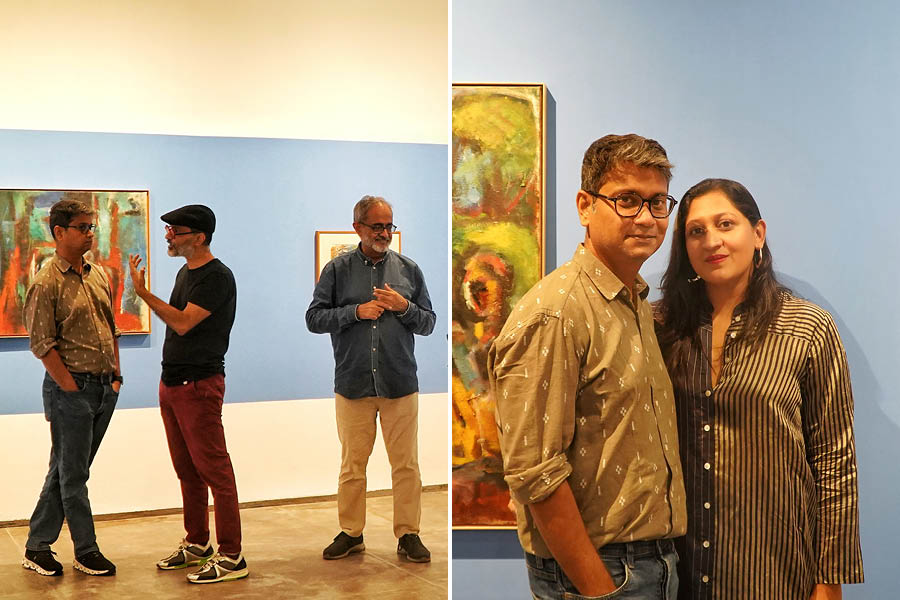
Prateek Raja and Naveen Kishore at the exhibition; (right) Prateek and Priyanka Raja in front of Reba Hore’s paintings
The inauguration was attended by Seagull Books founder Naveen Kishore, Seagull Books editors Sunandini Banerjee and Bishan Samaddar, and Experimenter co-founders and directors Priyanka and Prateek Raja, among others. This is the second solo exhibition of the late artist at Experimenter. The previous exhibition featured excerpts from Reba’s journals along with her paintings. These exhibitions aim to shed light on the lesser-known aspects of the painter.
“Reba Hore’s paintings are rooted in a passionate and spontaneous visual language, drawing from the everyday scenes around her. Her work reveals a gaze, shaped by a web of experiences that challenge conventional perceptions of the world. The mundane aspects of domestic life, often seen as secondary to intellectual pursuits, undergo a transformation in Hore’s works and pulsate with a fierce self-awareness. The human figures are not simply formal representations, but rather reflections of her deep emotional responses,” said Priyanka and Prateek Raja.
The stillness of life

An abstract human sketch by the artist
The human figures in Reba’s paintings possess a certain fragility. The sketches, with their body language, make one wonder if they convey samarpan (surrender), but with a sense of resolve. Perhaps her involvement with the Communist Party and political activism during her formative years gave her deeper insight into human lives. Whether it’s a painting of an adult figure and two children sitting in close proximity, as if engaged in personal exchanges within a family, or an adult supervising children as they study, the open-endedness reminds you of Haruki Murakami and a temporal reality where interpretations are personal.

Art enthusiasts check out the paintings at the gallery
The artist divided her life between Kolkata, Santiniketan, and New Delhi. Reba witnessed the Bengal Famine of 1943, a period anyone familiar with its history or archival photos can vividly recall. The famine and its aftermath profoundly impacted the political activist and artist.
Reflecting on the artistic expression of Reba Hore, Priyanka and Prateek further shared, “In a world governed by rigid expectations of productivity, her work is a testament to reclaiming one’s time and energy, turning the process of engaging with the self and the surrounding world into an intimate, radical act of liberation and fulfilment.”
Domesticity and abandonment
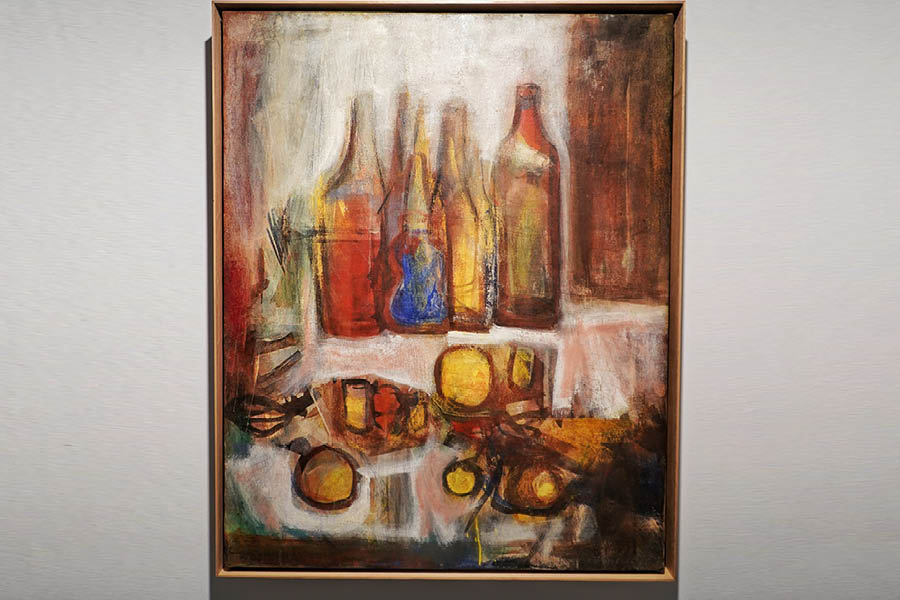
An artistic representation of everyday things
“As a person, I am dependent on my feelings, I am emotional. My paintings have a lot of spontaneity about them. There is a concept, a theme, which arises from what I see around me, from what in that moves me. But it only arises as a motive, a goal, an aim,” the artist observed about her work during her lifetime.
It’s remarkable how everyday objects found their way into her artistic expression. Bottles stacked together, tidbits lying around — things that wouldn’t seem ‘special’ — become poignant in Reba Hore’s artworks. The brushstrokes, the deliberate scratch marks, perhaps to signify time and the blend of two or more colours to represent the vacuum around human figures — the smallest details add a distinctive character to her paintings.
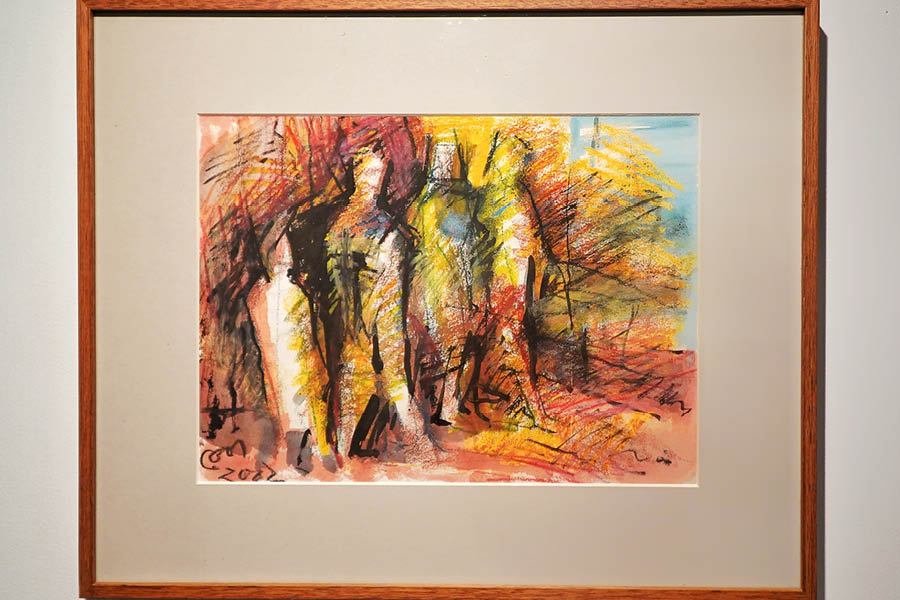
Human figures and master stroke of colours in Reba Hore’s artwork
Several of Reba’s works are untitled. Upon closer inspection, the domesticity in her paintings forms an association, as does the sense of abandonment. It’s as if the paintings contain a controlled fire — they don’t reveal much but invite you into a prism of illusion and reality. Her work feels almost Beckettian, uncannily reminiscent of the mathematical precision in the diagram from Quad. The pattern is as challenging as a Rubik’s cube, as difficult as sudoku, or perhaps just vulnerable, palpable living testaments of an artist — no pretensions whatsoever.
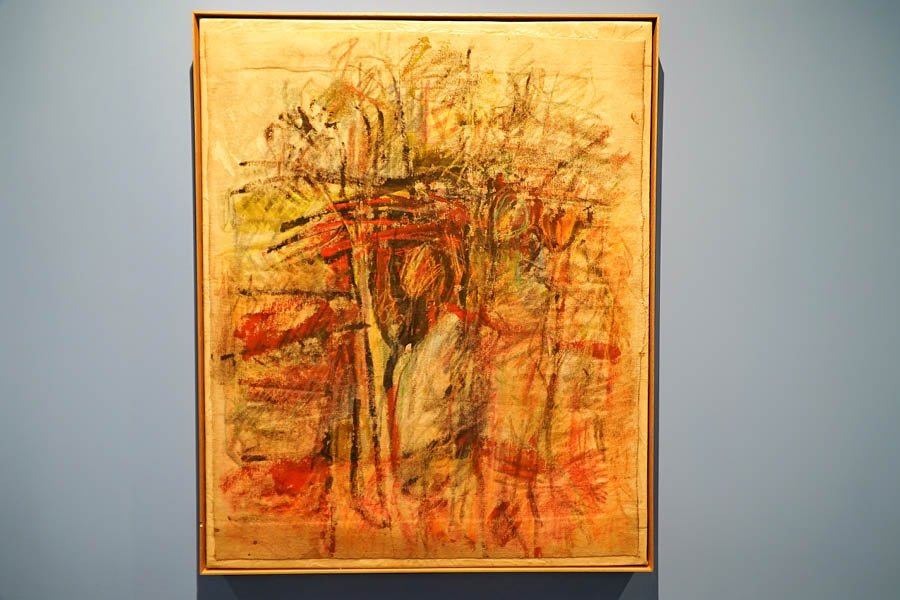
An abstract painting by the artist, exhibited at Experimenter Kolkata
The art exhibition will be on display until November 30 at 2/1, Hindustan Road, Dover Terrace, Ballygunge, Kolkata. The gallery is open from Tuesday to Saturday, 10.30am - 6.30pm, and is closed on national holidays.
